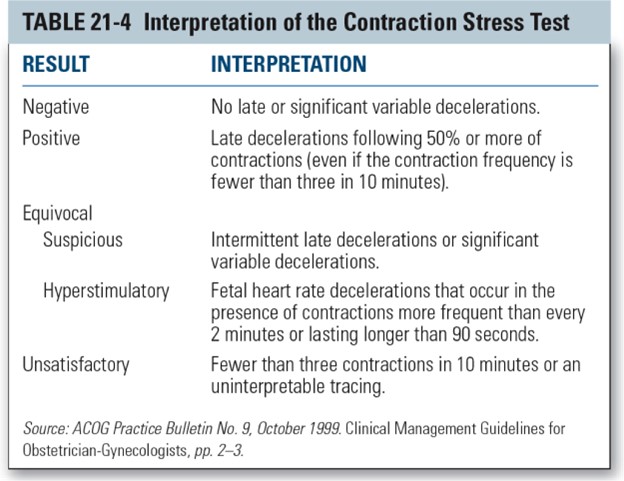A nurse is caring for a client in labor who has an internal fetal scalp electrode applied for continuous fetal heart rate (FHR) monitoring.
The nurse notes a pattern of late decelerations on the FHR tracing.
What is the priority nursing intervention?
Change the client's position.
Administer oxygen via face mask
Increase intravenous fluid rate.
Notify the health care provider.
The Correct Answer is D
Notify the health care provider. Late decelerations are a sign of uteroplacental insufficiency, which means that the blood flow and oxygen supply to the placenta and the fetus are compromised. This is a serious condition that can lead to fetal hypoxia and acidosis. The priority nursing intervention is to inform the health care provider who can assess the situation and decide on the appropriate course of action, such as delivery by cesarean section.
Choice A is wrong because changing the client’s position may not improve the blood flow to the placenta if there is a problem with the placenta itself, such as placental abruption.
Choice B is wrong because administering oxygen via face mask may not be enough to correct the fetal hypoxia caused by uteroplacental insufficiency.
Choice C is wrong because increasing intravenous fluid rate may not improve the blood flow to the placenta if there is a problem with the maternal blood pressure, such as hypotension from epidural analgesia.
Nursing Test Bank
Naxlex Comprehensive Predictor Exams
Related Questions
Correct Answer is B
Explanation
Negative CST.A negative CST means that there are no late or significant variable decelerations of the fetal heart rate (FHR) during three uterine contractions in 10 minutes.
This indicates that the fetus is well oxygenated and can tolerate the stress of labor contractions.
Choice A is wrong because a positive CST means that there are late decelerations of the FHR with 50% or more of the contractions.
This suggests that the fetus is at risk of hypoxia and may need early delivery.
Choice C is wrong because an unsatisfactory CST means that there are fewer than three contractions in 10 minutes or the tracing is not interpretable.
This does not provide enough information to assess the fetal well-being.
Choice D is wrong because an equivocal CST means that there are either intermittent late decelerations or significant variable decelerations.
This indicates that the fetus may have some degree of compromise and may need further testing.
Normal ranges for FHR are 110 to 160 beats per minute, and for uterine contractions are 2 to 5 per 10 minutes.

Correct Answer is ["A","B","C","D"]
Explanation
The correct answer is choice A, B, C and D.These are the four components of a biophysical profile (BPP) that are scored as 2 (normal) or 0 (abnormal) based on ultrasound examination.The fifth component is the nonstress test (NST) that measures the fetal heart rate reactivity.A total score of 8 or 10 is normal, 6 is equivocal, and 4 or less is abnormal.
Choice E is wrong because fetal position is not a part of the BPP score.Fetal position is determined by ultrasound but it does not affect the score.

Normal ranges for each component are:
• Fetal breathing movement: One or more episodes of fetal breathing lasting at least 30 seconds within 30 minutes.
• Fetal tone: One or more episodes of active extension and flexion of a fetal extremity or opening and closing of the hand within 30 minutes.
• Reactive fetal heart rate: Two or more fetal heart rate accelerations that peak at least 15 beats per minute above the baseline and last at least 15 seconds from baseline to baseline during 20 minutes of observation.
• Amniotic fluid volume: A single deepest vertical pocket of amniotic fluid that measures at least 2 centimeters.
• Gross body movement: Three or more discrete body or limb movements within 30 minutes.
Whether you are a student looking to ace your exams or a practicing nurse seeking to enhance your expertise , our nursing education contents will empower you with the confidence and competence to make a difference in the lives of patients and become a respected leader in the healthcare field.
Visit Naxlex, invest in your future and unlock endless possibilities with our unparalleled nursing education contents today
Report Wrong Answer on the Current Question
Do you disagree with the answer? If yes, what is your expected answer? Explain.
Kindly be descriptive with the issue you are facing.
